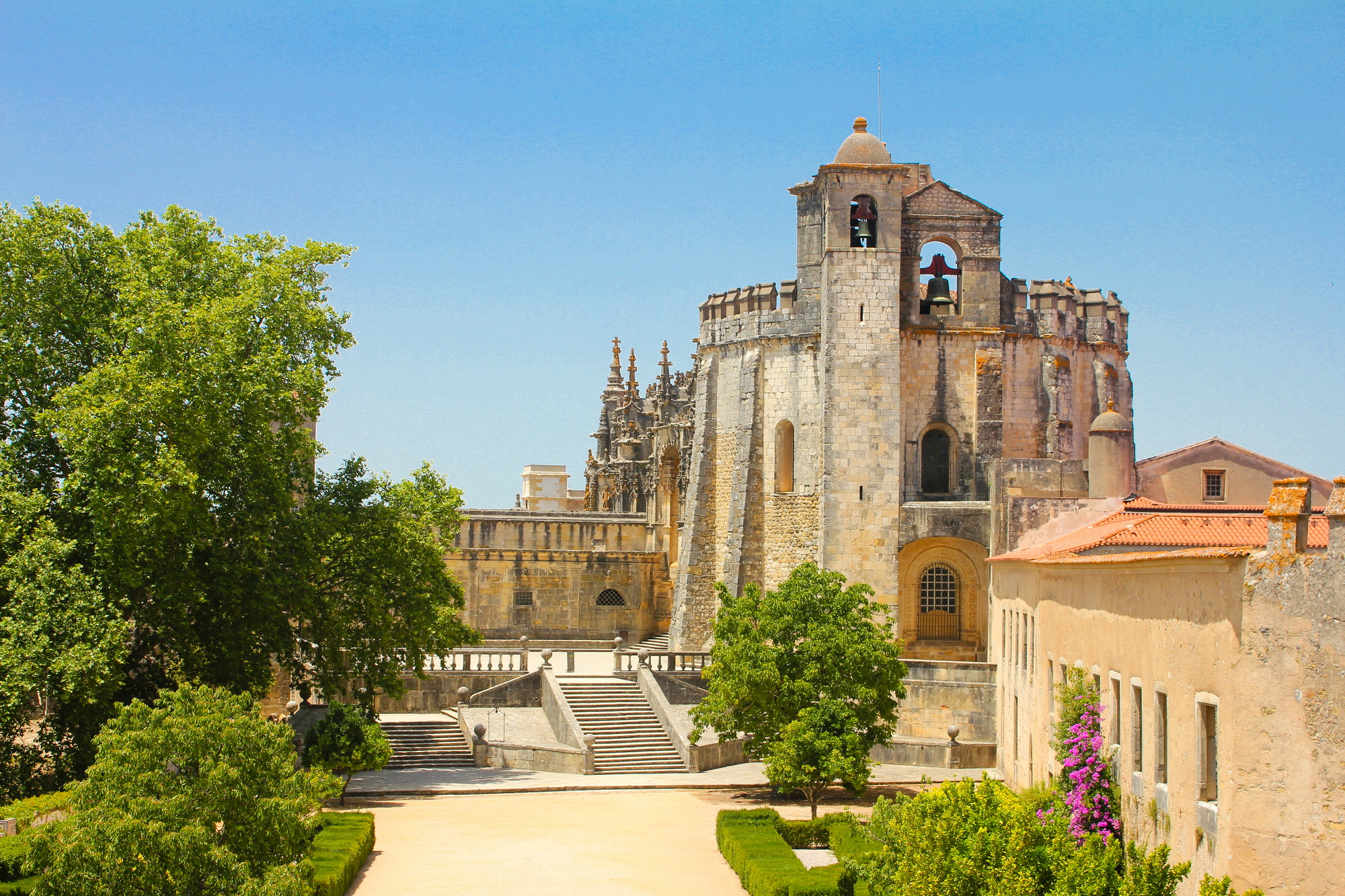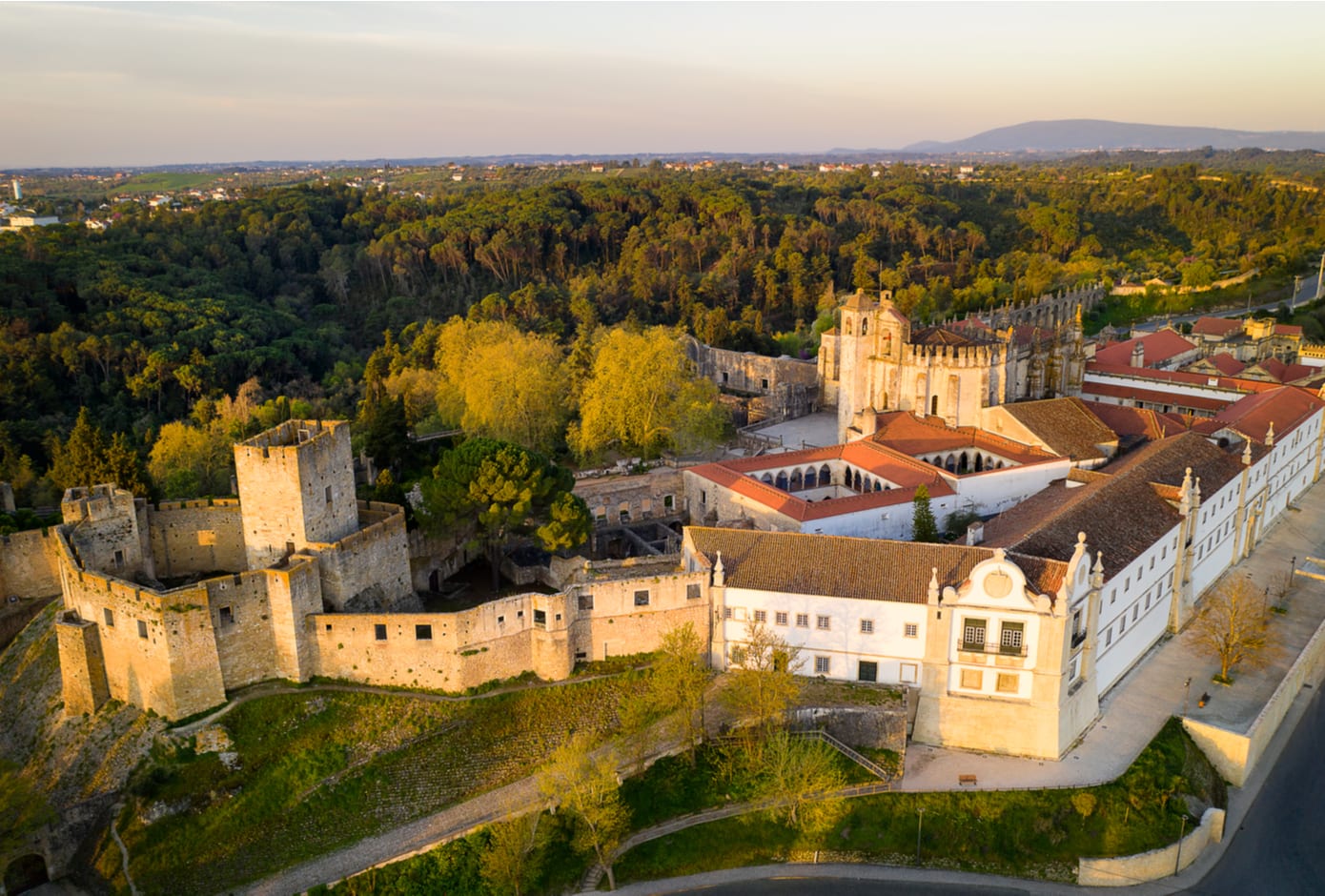The Convent of Christ in Tomar: A UNESCO World Heritage Site Showcasing Portugal’s Rich History and Architecture
The Convent of Christ (Portuguese: Convento de Cristo) is a monumental architectural complex located in the town of Tomar, Portugal. It is one of the most significant historical and cultural landmarks in the country, with a rich history that spans over eight centuries. The site is a UNESCO World Heritage Site, recognized for its unique blend of architectural styles, historical importance, and cultural significance.

Historical Background
Origins and the Knights Templar
The Convent of Christ traces its origins to the 12th century, during the Reconquista, when Christian forces sought to reclaim the Iberian Peninsula from Muslim rule. In 1159, the Portuguese King Afonso Henriques granted the region of Tomar to the Knights Templar, a powerful military order established to protect Christian pilgrims and defend the Holy Land. The Templars chose Tomar as their headquarters in Portugal, and in 1160, they began constructing a fortified castle and a church, which would later evolve into the Convent of Christ.
The Templars' presence in Tomar was strategic, as the town was located near the frontier between Christian and Muslim territories. The castle served as a military stronghold, while the church, known as the Charola (or Rotunda), was designed as a place of worship and reflection for the knights. The Charola, inspired by the Church of the Holy Sepulchre in Jerusalem, became the spiritual heart of the complex.
The Order of Christ
In 1312, the Knights Templar were disbanded by Pope Clement V under pressure from King Philip IV of France. However, in Portugal, King Dinis I reestablished the order as the Order of Christ in 1319, with the approval of Pope John XXII. The Order of Christ inherited the Templars' assets, including the Tomar complex, and continued their mission of defending Christianity and promoting maritime exploration.
During the 15th and 16th centuries, the Order of Christ played a pivotal role in Portugal's Age of Discoveries. Prince Henry the Navigator, a key figure in the exploration of Africa and the Atlantic, served as the Grand Master of the Order. Under his leadership, the Order financed and supported numerous expeditions, contributing to Portugal's emergence as a global maritime power.
Expansion and Transformation
The
Convent of Christ underwent significant expansion and transformation
during the Renaissance and Manueline periods. In the 15th and 16th
centuries, successive Portuguese monarchs, including King Manuel I and
King João III, commissioned the construction of new buildings and the
renovation of existing structures. The complex evolved from a medieval
fortress into a sprawling monastic and residential complex, reflecting
the wealth and influence of the Order of Christ.
Architectural Features
The Convent of Christ is renowned for its architectural diversity, showcasing a blend of Romanesque, Gothic, Manueline, and Renaissance styles. Each phase of construction reflects the historical and cultural context of its time, making the site a living testament to Portugal's architectural evolution.
The Charola (Rotunda)
The Charola, or Rotunda, is the oldest and most iconic structure within the complex. Built in the 12th century, it is a circular church inspired by the Church of the Holy Sepulchre in Jerusalem. The Charola served as the private oratory of the Knights Templar and is characterized by its octagonal design, massive stone walls, and intricate frescoes.
The interior of the Charola is richly decorated with Gothic and Renaissance elements, including painted panels, sculptures, and gilded woodwork. The central altar is surrounded by a ambulatory, allowing the knights to circulate during religious ceremonies. The Charola's unique design and spiritual significance make it one of the most remarkable examples of Templar architecture in Europe.
The Manueline Nave
In the early 16th century, King Manuel I commissioned the construction of a new nave adjacent to the Charola. Designed by the architect Diogo de Arruda, the Manueline nave is a masterpiece of the Manueline style, a uniquely Portuguese architectural style characterized by elaborate ornamentation and maritime motifs.
The nave's most striking feature is its ornate window, known as the "Janela do Capítulo" (Chapter House Window). This window is adorned with intricate carvings of ropes, corals, and other maritime symbols, reflecting Portugal's seafaring heritage. The interior of the nave is equally impressive, with vaulted ceilings, stained glass windows, and decorative motifs inspired by the Age of Discoveries.
The Cloisters
The Convent of Christ features several cloisters, each built during a different period and reflecting a distinct architectural style. The most notable cloisters include:
Claustro do Cemitério (Cloister of the Cemetery): Built in the 15th century, this Gothic cloister served as a burial ground for the monks. It is characterized by its simple, austere design and serene atmosphere.
Claustro de D. João III (Cloister of King João III): Constructed in the 16th century, this Renaissance cloister is one of the most elegant and harmonious structures in the complex. Designed by the architect Diogo de Torralva, it features a two-story arcade with classical columns and arches.
Claustro da Lavagem (Washing Cloister): This cloister, built in the 15th century, was used for washing and drying clothes. It is a functional yet aesthetically pleasing structure, with a central fountain and a covered walkway.
The Aqueduct
In
the 16th century, an aqueduct was built to supply water to the convent.
The aqueduct, known as the "Pegões Aqueduct," is an impressive feat of
engineering, stretching over 6 kilometers and featuring 180 arches. It
is a testament to the ingenuity and resourcefulness of the builders.
Cultural and Historical Significance
The Convent of Christ is not only an architectural marvel but also a symbol of Portugal's history and identity. It embodies the country's medieval past, its role in the Age of Discoveries, and its cultural achievements during the Renaissance.
Spiritual and Religious Significance
As the headquarters of the Knights Templar and later the Order of Christ, the Convent of Christ played a central role in the spiritual and religious life of Portugal. It was a place of worship, reflection, and pilgrimage, attracting devout Christians from across Europe. The Charola, in particular, remains a sacred space, revered for its connection to the Templars and its unique architectural design.
Role in the Age of Discoveries
The Convent of Christ is closely associated with Portugal's maritime explorations during the 15th and 16th centuries. The Order of Christ provided financial and logistical support for many of the expeditions that established Portugal as a global power. The Manueline decorations throughout the complex, with their maritime motifs, celebrate this era of discovery and exploration.
UNESCO World Heritage Site
In
1983, the Convent of Christ was designated a UNESCO World Heritage
Site, recognizing its outstanding universal value. The site is
celebrated for its architectural diversity, historical significance, and
cultural impact. It is a must-visit destination for tourists,
historians, and architecture enthusiasts from around the world.
Conclusion
The Convent of Christ is a monumental testament to Portugal's rich history and cultural heritage. From its origins as a Templar stronghold to its transformation into a Renaissance masterpiece, the complex reflects the evolution of Portuguese architecture and the country's role in shaping world history. Its unique blend of styles, spiritual significance, and connection to the Age of Discoveries make it one of the most important and fascinating landmarks in Europe. Whether you are a history buff, an architecture enthusiast, or a curious traveler, the Convent of Christ offers a captivating journey through time and a deeper understanding of Portugal's past.


0 Comment to "The Convent of Christ in Tomar: A UNESCO World Heritage Site Showcasing Portugal’s Rich History and Architecture"
Post a Comment